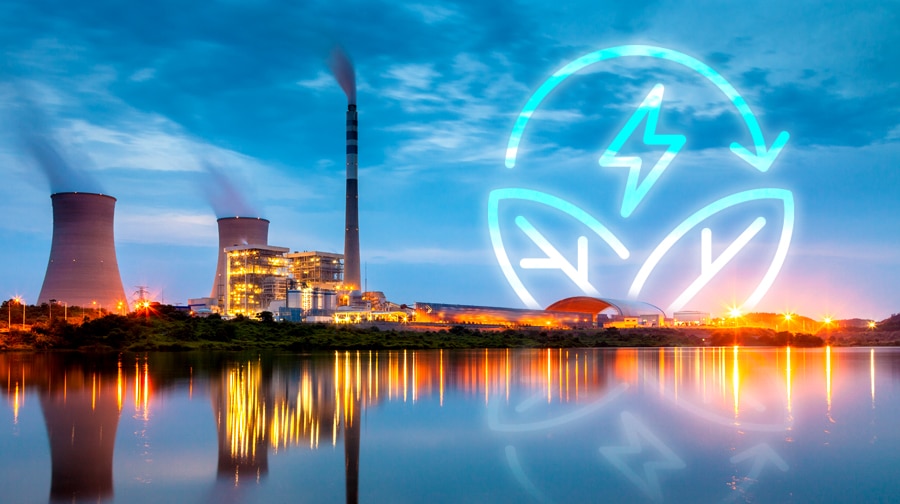Ask anyone what the future of energy generation looks like, and they’re likely to say “renewables, of course.”
But it’s not enough to gaze at the rising sun on the horizon. We have a long road to travel, and we need to look down at where we stand today. As we saw repeatedly in 2021, renewable energy falters when the infrastructure is strained. That’s why thermal energy generation plays an indispensable role in meeting baseload power needs.
Where does the energy industry stand today?
It took over a century to develop the existing power system infrastructure, which is critical to sustain our way of life. Recently, a growing number of extreme weather events — winter storms, wildfires, hurricanes, floods, etc. — have become a real threat to maintaining a reliable supply of electricity. Widespread disruptions in 2021 resulted from a deadly winter storm in Texas, Hurricane Ida in Louisiana, and raging wildfires in the western U.S., highlighting the deep-rooted vulnerabilities of the existing power system. These incidents underscore the need to modernize the entire value chain: electricity generation, transmission & distribution, and consumption.
During the pre-COVID-19 era that ended in December 2019, the global economic growth and energy outlook were on solid footing. With modest 3% growth in global GDP, the demand for electric energy would be supplied primarily with natural gas and renewables.
The U.S. Energy Information Administration (EIA) predicted in its International Energy Outlook 2019 that from 2018 to 2050:
- The contribution of coal generation would decline from 40% to 20%
- Nuclear generation would decline from 15% to 10%
- Natural gas generation would increase from 22% to 32%
- Renewables would increase from 20% to 50%.
However, COVID-19 had a profound effect on the energy market. The EIA reported that in 2020 renewable energy sources — wind, solar, hydroelectric, biomass and geothermal — generated roughly 20% of total electricity produced in the U.S. Natural gas produced twice as much power as renewables. And in 2021, economic rebounds resulted in an all-time high for coal-fired power generation worldwide.
According to a recent U.S. Department of Energy (DOE) study, solar and wind energy sources are poised to supply 75% of U.S. electricity by 2035 and 90% by 2050. If so, utilities must modernize the existing power grids to become flexible and resilient for integrating the rapid growth of renewable energy sources. The U.S. federal government has allocated $73 billion to upgrade the power grid, including thousands of miles of new, resilient transmission lines.
But as we look toward the future, we must face the challenges of today. The industry faces significant obstacles in meeting the growing demand for electricity with an evolving generation mix. These include declining traditional base load generation and growing utility-scale renewable sources, a shrinking workforce that’s qualified to operate and maintain more complex systems, and the need to simultaneously upgrade, operate, and maintain an aging grid infrastructure.
The essential role of baseload generation
Today’s grid baseload power, generated by coal, natural gas, and nuclear, is critical in supplying uninterrupted electricity. Baseload power is the minimum required supply of reliable and sustainable electricity over an extended period. Naturally, renewable energy sources such as solar and wind lack the ability to provide firm power around the clock. Wind and solar, on their own, will never be able to provide baseload power without large-scale storage solutions or ancillary generation assets, because the sun doesn’t always shine, and the wind doesn’t always blow.
In the United States, fossil fuels accounted for more than 60 percent of utility-scale generation in 2020, with coal and nuclear contributing around 19 percent. Worldwide fossil fuels remain by far the largest source of electricity, representing an estimated 94 percent of total electricity generation. For the foreseeable future, the rising demand for electricity will continue to outpace the growth of renewable energy sources.
This imbalance between supply and demand must be resolved to accommodate the energy transition. The exact point at which wind and solar energy must be complemented with firm generation will most likely vary from one region to another. Studies show that power grids could run into severe trouble once the contribution from intermittent renewables starts to exceed the levels above 75 percent of the total generation mix.
Traditionally, thermal power generating plants fueled by coal, nuclear, and natural gas have been supplying baseload power around the clock. With the contribution of coal and nuclear generation steadily declining, and the contribution of renewable energy increasing, losing a reliable supply of baseload power has become a real threat to maintaining electric system stability.
Recent events in California demonstrate the physical limitations of solar and wind generation in a baseload role. The state derives 36 percent of retail electricity sales from solar, wind, and geothermal capacity, which is not sufficient to meet the growing demand for electricity. In summer 2020, it experienced rolling blackouts for the first time since 2001. These were partly attributed to a shift from natural gas to solar generation and extreme weather conditions that stressed grid infrastructure, resulting in a supply shortfall.
It is evident that as the contribution of renewable energy sources increases in the evolving generation mix, we must also increase some form of firm generation for the power grid to ensure sufficient supply of baseload power around the clock. Emerging technologies such as energy storage systems, hydrogen, fuel cells, etc. seem promising for the future. Studies show that natural gas has the potential to become a cleaner fuel by lowering its carbon intensity level — by reducing the flaring and venting of methane during extraction, for example, or by blending natural gas with hydrogen.
Here’s my prediction: For the near-to-medium term, natural gas generation will balance the overall generation mix by becoming the cleaner source of generation, while renewables’ share increases and coal’s share decreases. Natural gas promises to be the cleaner, more reliable and more resilient source of baseload power generation and can help integrate intermittent renewable energy sources for the net-zero carbon grid of the future.
The ongoing transformation of thermal power
Thermal power generating companies feel growing pressure to demonstrate flexibility, sustainability, reliability, and social responsibility in the evolving energy market. They must redefine their O&M strategy and operating models to remain competitive and profitable while delivering high levels of asset performance. That’s where ST Power Services steps in. We work with thermal power plants to optimize their asset performance across the entire value chain.
We’re 100 percent focused on transforming existing power plants that operate aging gas turbines, such as General Electric’s E and F-class machines, LM6000, Siemens’s 501D5, and Alstom’s GT fleet. We strive to make them flexible, efficient, competitive, and profitable by designing pragmatic solutions. These assets are critically relevant for supplying reliable baseload power, integrating renewable energy sources, and maintaining grid stability throughout the transition period.
We have successfully transformed several existing thermal power plants using a four-pronged approach:
Total Asset Performance
We work to boost life-cycle cost savings, extend equipment service life, implement robust O&M strategy, and enhance workforce capability, all with a goal to maximize total asset value.
Obsolescence Management
Power plants are forced to upgrade their plant control and electrical systems when original equipment manufacturers (OEMs) stop producing hardware for them. However, investing Capex on such systems requires a realistic assessment of the plant’s expected life and its economic viability. ST Power Services can recharge, repair, and replace aging equipment to extend the total asset life cycle.
Business Process Management
The workforce that operates and maintains aging technology is aging as well. As power plant employees edge toward retirement, the industry faces a huge challenge building and training a new, competitive workforce for the evolving energy industry. We help to transform the workforce, workflows, and O&M documentation to standardize plants’ processes and ensure that the O&M team is competent to perform its job function.
Owner’s Engineer / Representative
We serve as a part of the plant O&M team to work with them throughout the process of implementing recommendations and solutions for optimum business results.
Curious about what ST Power Services can do for your power plant? Connect with us and let’s talk.


